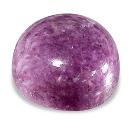|
|
||||||||||||||||
|
||||||||||||||||
|
||||||
|
|
|
|
Wilsonite
(a
variety
of Muscovite) |
|
| | |
| Discovered in 1852; IMA status: Not Valid (a variety of Muscovite) | ||
|
| ||
|
Chemistry |
|
|
| |
|
K2(Mg,Al)4-5(Al,Si)8O20(OH)4 (Muscovite) | |
|
|
Potassium Magnesium Aluminum Silicate Hydroxide |
|
|
|
|
More Information |
|
|
|
|
|
|
Wilsonite
is a variety of Muscovite. |
|
|
Mindat.org
(Wilsonite) |
|
View mineral photos: | |
|
|
|
|
Alurgite is another variety of Muscovite that is reddish-purple and gets its color from the presence of manganese in its chemical formula. A green variety of Muscovite also exists that is called Fuchsite and is colored by the presence of chromium. Distribution:
In Canada: Bathurst Township, Lanark County, Ontario
and Rémigny, Témiscamingue RCM, Abitibi-Témiscamingue, Québec, Canada.
|
|
|
We
have not photographed the Wilsonite gems yet. Please
check back soon. |
